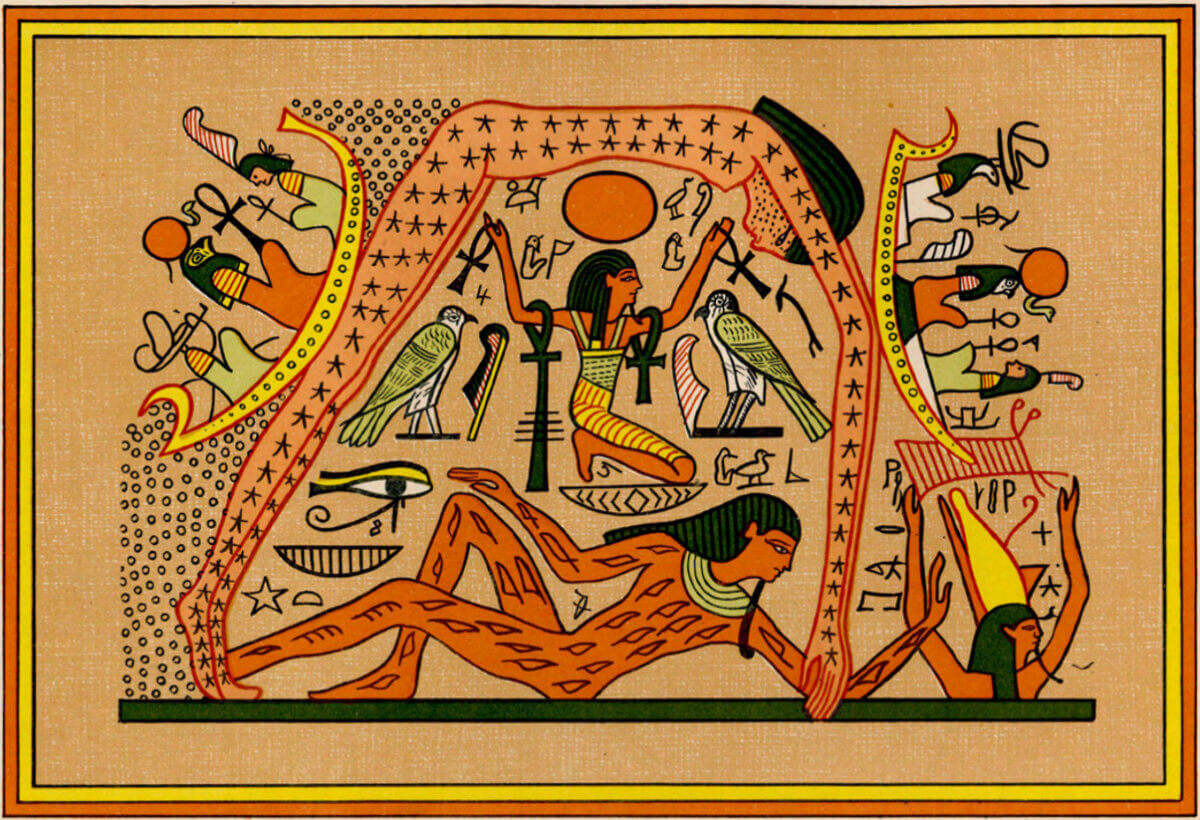Cultures around the world have long projected myths and legends onto the night sky, imagining gods and spirits, heroes and beasts. Now, a new study suggests that for the ancient Egyptians, a key figure of their cosmos – the sky goddess Nut – may have been linked to the most prominent feature of the night sky: our own galaxy the Milky Way.
In Egyptian mythology, Nut (pronounced “noot”) was a central deity, the goddess of the sky itself. She was often depicted as a woman arched over the earth, her body covered in stars. The Sun god Ra was said to travel across her body each day, disappearing into her mouth at sunset and emerging again, reborn, at dawn from between her legs.
But while Egyptologists have long known of Nut’s symbolic connection to the sky, her specific link to astronomical features was less clear. Was she just a figurative representation, or did the Egyptians tie her to something they could actually observe?
That’s the question that Dr. Or Graur, an astrophysics professor at the University of Portsmouth, set out to investigate. Using advanced astronomical software, he simulated what the night sky would have looked like in ancient Egypt during different eras and seasons. Then, he compared those views to descriptions of Nut found in key Egyptian texts. His paper is published in the Journal of Astronomical History and Heritage.
What Graur discovered was intriguing. In the “Fundamentals of the Course of the Stars,” a cosmological text from around 1880 BCE, Nut’s head was described as aligned with the western horizon, with her arms outstretched to the north and south. Meanwhile, her groin was placed in the east.

When Graur looked at his astronomical simulations, he found something similar. During summer nights in ancient Egypt, the Milky Way would have stretched across the sky from northeast to southwest, in an orientation very close to the description of Nut’s torso. In the winter months, the orientation shifted, to run from northwest to southeast – now highlighting the goddess’s outstretched arms.
So was the Milky Way literally seen as the body of Nut arching over the earth each night? Graur believes the connection may have been more figurative than literal. Nut’s roles as the all-encompassing sky and mother of the sun required her to remain eternally present, a static backdrop against which the Sun, Moon and stars cycled in their daily and yearly rhythms.
The Milky Way, on the other hand, changes position hour by hour as the earth rotates, with different sections rising and setting throughout the night. Rather than strictly embodying the Milky Way, then, Graur suggests that the shifting celestial band may have served as a symbolic marker of Nut’s body, emphasizing different aspects of her at different times – her torso in the summer months, her arms in winter.
Interestingly, Graur found similar mythological themes in other cultures across the world. From the Eastern Pawnee of North America to the Navajo and the Maya, the Milky Way is often seen as intimately connected to the afterlife, a path that souls travel to reach the realm of the dead. Nut, too, was linked to the afterlife in Egyptian belief. She was said to ingest the Sun each night only to give birth to it again at dawn, a cycle of death and rebirth. She received the souls of deceased kings and helped them ascend to the imperishable stars.

The cross-cultural parallels don’t end there. In Ptolemaic Egypt, Nut was linked to the autumn bird migration that brought millions of avians south from Eurasia each fall. A text describes them arriving from the “northwest to northeast” – directions that line up with the orientation of the Milky Way in those months. The birds were said to emerge from the Duat – the Egyptian underworld, a place Nut swallowed the Sun into each night. It’s a concept that bears an almost eerie similarity to myths from the Baltic region of Europe, where the Milky Way was seen as the path birds followed on their southward migration.
Of course, we must be cautious about drawing too many parallels between distant cultures. The night sky is vast, and the human imagination even more so – similarities can arise by pure coincidence. But Graur’s research provides a tantalizing possibility, a new way of glimpsing how one of the world’s oldest civilizations may have made sense of the cosmos wheeling above them.
“I chanced upon the sky-goddess Nut when I was writing a book on galaxies and looking into the mythology of the Milky Way. I took my daughters to a museum and they were enchanted by this image of an arched woman and kept asking to hear stories about her,” Graur says in a university media release. “My research shows how combining disciplines can offer new insights into ancient beliefs, and it highlights how astronomy connects humanity across cultures, geography, and time. This paper is an exciting start to a larger project to catalog and study the multicultural mythology of the Milky Way.”
The ancient Egyptians, like us, were naturally drawn to the Milky Way, that most spectacular of night sky phenomena. And in a world where the boundaries between earth and heaven, natural and supernatural were fluid, it’s not hard to imagine them projecting one of their most powerful deities onto that shimmering celestial path.
Nut’s embrace may no longer literally arch above us. But when you find yourself under a clear night sky, take a moment to trace the path of the Milky Way as it shifts from season to season. In connecting yourself to that view, you connect yourself, in a way, to the ancient Egyptians who once spun their stories in the stars.
